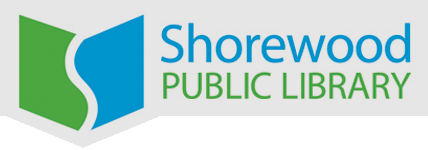Early Literacy
What is it?
Early literacy is what children know and understand about reading and writing before they actually learn to read and write on their own. Early literacy begins in infancy and develops naturally through real life experiences and interactions with caring adults. It can’t be taught through formal instruction.
Early Literacy Skills
Researchers have identified six early literacy skills that build the foundation for formal reading and writing. Children who start school with these skills will have an easier time becoming good readers.
Vocabulary |
Knowing the names of things |
Print Motivation |
Being excited about books and reading |
Print Awareness |
Noticing print everywhere; knowing how to handle a book; knowing how to follow the words on a page,recognizing that print and speech are related |
Narrative skills |
Being able to describe things and tell stories |
Letter Knowledge |
Knowing that letters have names and are different from each other and that specific sounds go with specific letters |
Phonological Awareness |
Ability to hear and play with the smaller sounds in words and recognizing that words are made up of different so |
Early Literacy Practices
Researchers have identified five “practices” or activities that you can share with children to help develop and strengthen their early literacy skills. No flash cards or instructional dvds needed. They are simple and, chances are, you are doing them already.
READING
Positive experiences with books create a love of reading and show children how books work.
- Share books daily starting with infants
- Create a comfortable reading spot or book corner at home
- Books are portable so to take them with you
- Choose books that are developmentally appropriate for your children
- Visit the library regularly to share a variety of books
- Use books to help ease transitions like lunch time to nap time or to prepare for or extend other experiences like a visit to the dentist or trip to zoo
- Encourage children’s interaction – helping turn pages, filling in words, guessing what will happen next. Babies may show interest in books by mouthing them.
- Talk about what you’ve read, point out things in pictures, ask questions
- Point to words or letters as you read
- Respond positively when children want to “read” to you
- Let children see you read
- Make books your own books– alphabet or counting books, theme books, photograph books, touch-and-feel books
- Read their favorite books again and again and again
TALKING
There is a direct link between children’s early exposure to words and future reading ability and comprehension.
- Expose children to new and unfamiliar words
- Talk “with” not “at” children. Have a conversation, listen, be responsive – even with babies
- Describe what you are doing. Name objects they see.
- Ask questions – listen to their answers even if it’s babbling
- Model correct language and grammar, but don’t criticize or reprimand their mistakes
- Tell stories. Help them tell stories.
SINGING
Singing, music, rhymes, and language games help children recognize the sounds and syllables in words.
- Experiment and play with sounds
- Point out sounds in nature and the world
- Read and recite poems, nursery rhymes
- Clap out names or words
- Learn finger rhymes that compliment other activities like Five Little Pumpkins or 5 Little Snowmen
- Make music part of your daily activities
- Expose children to a variety of musical styles. The library has a large cd collection of children’s music
- Make instruments from common household objects
- Read books based on songs
- Make up your own songs or rhymes to go with daily routines
- Make up language games based on rhymes, first sounds or letters
WRITING
Experiences with print and writing help children recognize letters that make up words and help children develop the eye –hand coordination needed to read and write.
- Have many opportunities to play with shapes and letters (blocks, puzzles, magnets, writing in sand, flour, whipped cream) Children must be able to recognize shapes before they can recognize letters.
- Point out letters and print in the world (stores, signs, food cartons)
- Make the environment print-rich with labels, charts, calendars
- Have a variety of writing materials available (crayons, markers, pencils, chalk, paper, index cards, whiteboards)
- Encourage scribbling and pretend writing
- Make greeting cards and books
- Let them dictate descriptions of their artwork
- Display their writing and art. Put their names on their work
- Let them see you write so they will know writing is a valuable skill
PLAYING
Play is crucial to all aspects of children’s development. It gives them experience using language, expressing thoughts and emotions, problem solving, as well as enhancing creativity and social development.
- Provide opportunities for a variety of play – planned, spontaneous, with friends, alone, or with you. Be an active participant when invited.
- Make connections between stories and play – act out favorite stories
- Encourage writing during play (e.g. making menus, money, signs)
- Provide a variety of props – puppets, costumes, hats, masks, stuffed animals, dolls
- Use props from “real life” that include print (cereal boxes, envelopes, newspapers)
Additional Resources on Early Literacy
Reach Out and Read - Resources for Families
